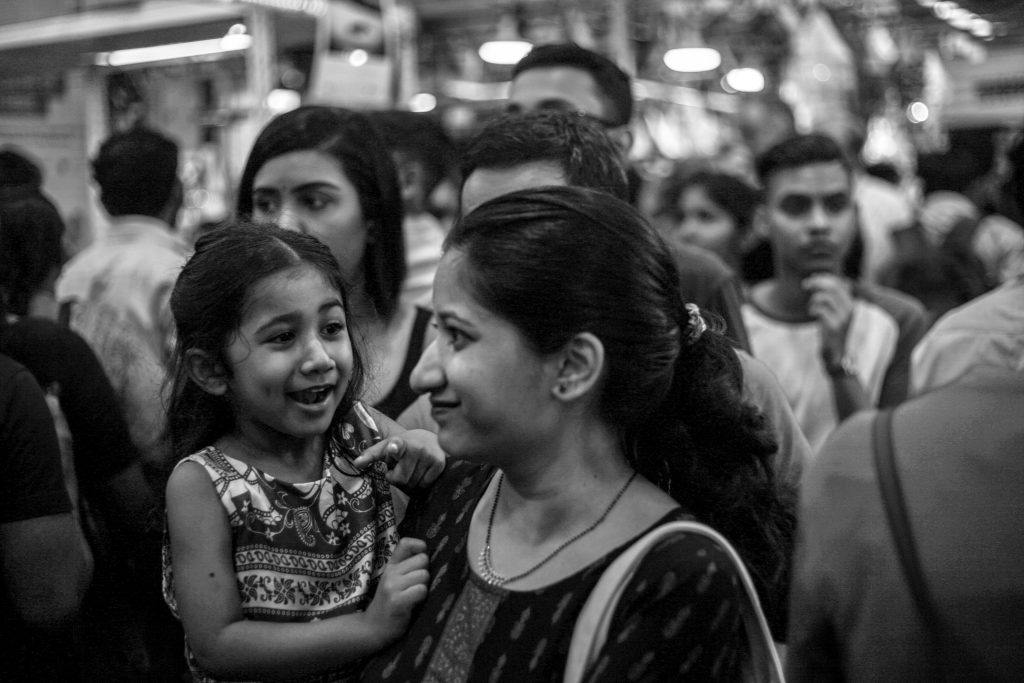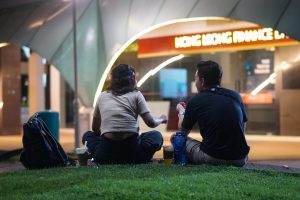All images from Rice File Photos unless otherwise stated.
No one can seem to agree on what exactly racial harmony is. Or at least, what Singapore wants it to be.
Online discourse over the past few months has been a massive feedback loop of disenfranchisement. The recent spike in COVID-19 cases and its rapidly spreading B1617 variant has not only emboldened some Singaporeans to express noxious racist and xenophobic comments on social media but has also fueled public cases of unbridled targeted physical and verbal attacks.
The latest lightning rod of controversy comes in the form of a Ngee Ann Polytechnic lecturer’s unprompted racist tirade at an interracial couple. In a video shared by Dave Parkash, the man accuses him of predatory behaviour, doubling down on shaming and hurling racist insults at the interracial couple even after being confronted.
Law and Home Affairs Minister K. Shanmugam then responded, saying: “I used to believe that Singapore was moving in the right direction on racial tolerance and harmony. Based on recent events, I am not so sure anymore.
It is impossible to ignore the irony of a senior educator clad in a shirt with ‘Singapore’ emblazoned across his chest uttering typically implicit, veiled racist sentiments out loud.

While nothing new, these long-simmering hostilities seem to be exacerbated by the profound exhaustion of the past year—and the seemingly never-ending, ever-mutating virus that has indirectly called into question the optics of Singapore’s racial harmony.
Sure, there’re government benchmarks measuring its success based on abstract markers like being comfortable with having a neighbour of a different race and the lack of racial or religious tensions in our daily lives. There’s also the florid spiel we hear in school about how Racial Harmony Day commemorates the race riots of 1964. Never again, they say.
Similarly, Singaporean youths can’t quite reach a consensus on what they want the idea of racial harmony to mean.
“I would say that within Singapore, or around the globe, no country has reached racial harmony,” one remarked in a group discussion with Rice.
As disparate viewpoints accented the conversation, a small but diverse set of young Singaporeans cycled through their various interpretations.
For a country whose national identity hinges so much on this indescribable, infinitely debatable concept, why do recent trends reveal a Singapore that is not, in fact, racially harmonious at all?
CMIO CMI

Plumbing into the depths of racial politics, the group first turned a gimlet eye upon the country’s unique structural relations.
One suggested that perhaps the vague notion of racial harmony can be read as moving past race entirely, that it should be a non-factor in the way we treat each other.
Another attributed the current surge in blatant xenophobia and racism to our rigid understanding of race, an unfortunate and pervasive byproduct of the CMIO Model passed down from Singapore’s colonial past.
In a survey conducted by Institute of Policy Studies and CNA, six in ten respondents indicated that race was important to them, which seemed to suggest that the Singaporean identity is still greatly enshrined in the CMIO framework.
While race-based policies such as the Group Representation Constituency (GRC) and the reserved Presidential Election ensured minority representation in various institutions, it has, more importantly, been emphasised as a key structural reinforcement for minorities to practice their cultures without feeling like they would have to conform to the practices of the majority race.

“What we struggle with is that with CMIO, you lose a lot of resolution in the form of racial subcultures … It’s not about ignoring race and pretending that (overlooking race) is understanding.”
However, racial categorisation in Singapore is not something that is self-identified but is assigned by the state based on paternal lines of descent.
“We are measuring today’s problems with yesterday’s policies,” he elaborates.
Zeroing in on the Ethnic Integration Policy, a scheme enacted in 1989 to ensure a balanced mix of ethnicities in HDB estates to “promote racial harmony and strengthen social cohesion”, he laments that these goals don’t quite translate. Rather, its mechanical and impersonal design lends itself to a lack of organic, communal understanding.
His peer chimes in that despite being surrounded by a diverse set of neighbours, he still keeps to himself. As for those who already confine themselves within their racial bubbles, the lack of meaningful interaction in HDB estates exacerbates things. This illuminates the glaring fault lines between the different racial groups.
No Country for Old Values

Most strikingly, the youths were especially eager to distance themselves from the inflexible ideologies that have come to be characteristic of older generations.
“I think it’s easier for (my grandparent’s) generation to have the tendency to rely on race as an excuse”, one participant observed.
This, as the group identified, is a double-edged sword that could result in one of two outcomes. These racist sentiments could either internalise themselves, passing through the generations, resulting in an infinite cycle of ignorance and intolerance. Or it could spawn a new batch of vocal and educated youth willing to acknowledge their culpability and challenge the prejudiced assumptions of the older generations.
“I remember my father mentioned that (I) cannot take the lift (by myself) because the cleaners are foreign workers and therefore it is not safe. It is only when I started volunteering with migrant worker enterprises that I realised they are extremely precious. But it really stems from these organic opportunities,” commented a participant.
Either way, it is hard to ignore that race will always be the first mark in the face of uncertainty and discomfort. The overarching narrative of racial harmony has, after all, been central to our country’s self-conception, making it an easy and inevitable scapegoat to avoid uncomfortable conversations about more complicated underlying issues.
Take for example the inflammatory remarks made by local creative director Eugene Chong, who asserted: “The noisy minority must be discouraged from playing the race card.”
Likening our heightened cultural sensitivity to an unwelcome disruption in our country’s racial harmony, he epitomises the wider inclination for Singaporeans to remain silent and plaster a feeble band-aid on a gaping wound, shying away from informing themselves and speaking up in the face of discontent.
Singapore Social… Studies

Just as the participants were quick to point out that the key difference in the current generation’s multifaceted perspective of race is due to more comprehensive education, many of them also recognised that national education has been crucial in moulding their perception of racial harmony.
Taught in schools and reinforced in the larger rhetoric, this simultaneously prioritises and hinders the way they view how various aspects of Singaporean life intersects with race.
They enriched the discussion with personal anecdotes of institutional successes and missteps.
One shared her coddled experience in a Special Assistance Plan (SAP) School, which presented a Singaporean experience that was predominantly Chinese. It was only when she entered polytechnic that she became cognizant of her shallow depth of racial awareness, inadvertently tinting her new experiences with peers of different racial groups with an air of ignorance—even if it was in good faith.
Another added that some SAP Schools have also been taking steps to actively combat their lack of racial diversity, introducing tailored programmes like Exploration in Ethnicity and Faith. Through their curriculums, they aim to provide a safe environment to facilitate much-needed conversations with young students.
But if such supposedly fundamental ideas have to be supplemented, or what more specifically taught, does that indicate a larger failure to weave nuanced racial awareness and sensitivity into our social etiquette?
An Identity Crisis

A participant puts forth the assertion that although racial harmony has always been Singapore’s defining feature, this does not actually equate to most of our lived realities.
“Whenever we have national performances, our national identity is that we’re racially diverse. Other ASEAN countries are amazing in their cultural performances, but in Singapore, we struggle when we sing Munnaeru Vaalibaa.”
His peer agreed: “I think national identity is sort of amorphous, it’s something that when you go out chasing, you will never get.”
Moreover, celebrating racial harmony in its current manner may also belay the attainment of true harmony, whatever that may amount to.
“When a new culture enters, we stereotype them based on the jobs that they take up, whether blue or white collar, based on a handful of individuals. So, for example, if they’re taking particularly high paying jobs, Singaporeans will say these people are stealing our jobs.”
Another shared that many still colloquially refer to Changi Business District as Chennai Business Park because of the high density of Non-Resident Indians living and working in the area. This diagnosis of poor cultural awareness signals a wider obstacle of pervasive and prevalent stereotypes, and how easily that could curdle into active discrimination.
As the conflation between race and nationality bounced back and forth, it was, frankly, a much-needed reminder that it is easy for many to swap them out almost interchangeably.
Ironically, being constantly reminded to look beyond the superficial instead reveals an attempt to codify experience. It is just as crucial to understand that many intersecting factors such as class, nationality, and even gender colours individual perspectives.
Though Singapore’s foreign workers more often than not fit into CMIO moulds, they seem to be socially exempt from fully integrating into the racial fabric of the country, assuming a certain uniformity of experience that separates locals from “outsiders”.
The same youth points out that this has driven the manner in which discrimination is pegged to job opportunities.
“Purely pursuing racial harmony because it’s something we want or something we value may make less sense than identifying the problems and frictions that may emerge because of clashes and tensions between races. If we take a problem-driven approach to help address some of these race-related problems, challenges, and tensions, perhaps it may also be worth taking a look behind the frustrations and anxieties.”
Promising Young Nation

“The more we talk about identity, it becomes a lowest common denominator thing. And if it starts splintering and decentralising amongst each of us, the idea of the self is broken into all these small little pieces that form our identity. How can we come back together if all we worry about are these small pieces?” posited a participant.
Broad solutions were thrown around, some suggesting a more empathetic approach from an angle of diversity and inclusion. This includes fostering a welcoming environment for Singaporeans to ask questions, without fear of hostility or retaliation. Courage and critical thinking should also be encouraged to challenge the existing assumptions and beliefs that drive outright bigotry.
“My hope is that the idea of identity as the key thing that differentiates us becomes the key thing that brings us together,” another remarked.
While education remains vital, many agreed that more emphasis should be placed on illuminating the set of challenges minorities face, addressing the root cause of current-day animosity head-on instead of shying away from “taboo” topics.
Or maybe the answer is a lot simpler: It’s time to move past the narrative of racial harmony entirely.
As our country progresses and our youth evolve accordingly, they hold the power to redefine what racial harmony could be, something that is neither fixed nor absolute. Just as their perceptions of racial harmony are currently varied and conflicting, their concepts of it are sure to change accordingly in the next decade.
Even though our future feels more uncertain with each passing day, pre-existing racist and xenophobic sentiments coming into sharp focus should be more than enough to mobilise our youths to affect tangible shifts in attitudes in the larger community.
But if there is one thing we can all agree on, though, it’s this: These issues will definitely not be met with yet another generational shrug.
This article is brought to you in collaboration with the National Youth Council.
Is Singapore ready for a post-racial harmony era? Email us your thoughts at community@ricemedia.co.






